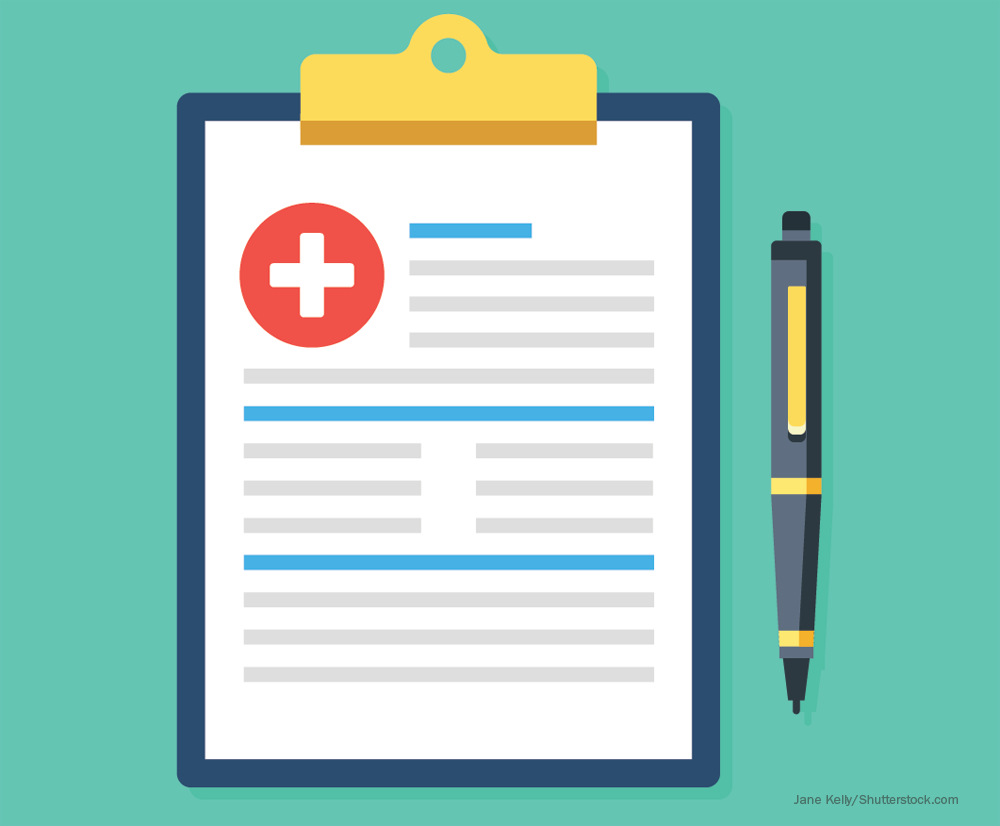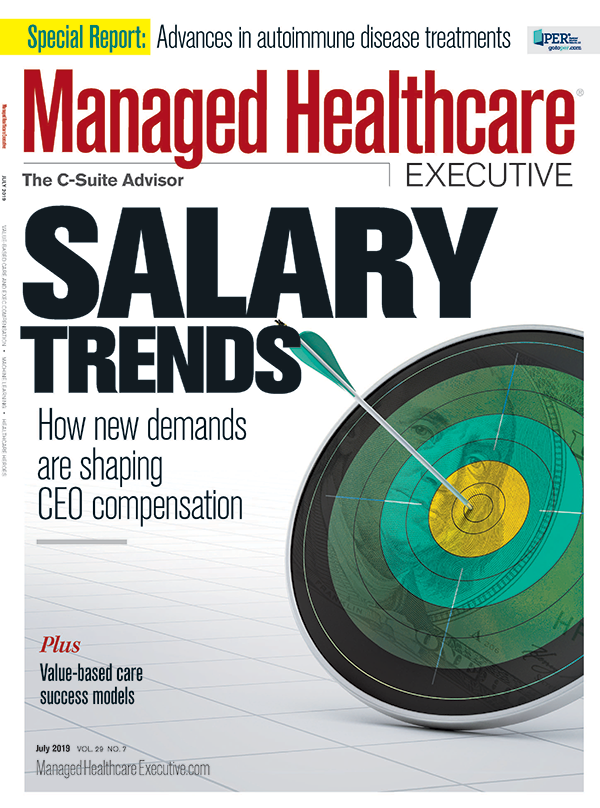Five Ways to Treat Chronically Ill Patients
Here are five surprising ways to tailor experiences so patients adopt healthier behaviors when faced with chronic conditions like diabetes, heart disease, cancer, and COPD.

Everyone wins when healthcare organizations successfully motivate chronically ill customers to get-and stay-healthy.
Patients know it. The healthcare industry knows it. But that’s not enough.
“Human behavior is pretty complicated. If it was easy, everybody would be making healthy choices,” says Richard Safeer, MD, medical director of employee health and wellness at Johns Hopkins HealthCare LLC at The Johns Hopkins Bloomberg School of Public Health in Baltimore. “Also, people have different needs, and you have to meet them where they are on their health journey.”
Here are five fresh and surprising ways to tailor experiences so patients adopt healthier behaviors when faced with chronic conditions such as type 2 diabetes, heart disease, cancer, and chronic obstructive pulmonary disease (COPD).
1. Let consumers decide how they want to hear from you
If you reach customers by the means they prefer, they’re more likely to listen. Don’t assume. Ask.
“Our survey shows that (health) plans are not quite keeping pace with the digital demand,” says Bryce Williams, president and CEO of HealthMine, A clinical technology firm with a clinical analytics platform in Dallas. “Plans need to meet beneficiaries on their terms and cater to their preferences.”
HealthMine’s survey of 781 Medicare Advantage or Supplemental members shows 47% favor digital communication with their plan, but only 34% actually receive it. A study by Survey Sampling International found only 18% wish healthcare providers reached them by regular mail.
Related article: Five Communication Strategies Managed Care Organizations Can Prioritize for Improved Chronic Care
Communication is critical for the complicated healthcare of individuals with chronic disease, says Tashfeen Ekram, MD, chief medical officer and co-founder of digital health firm Luma Health in San Francisco. “So much of what affects patient health outcomes has little to do with patient office visits but is tied more to what happens in between them. Patients and providers must be able to communicate effectively throughout the patient lifecycle.”
Knowledge is power: Patients can express their concerns while healthcare staff can learn of and address medical issues early on.
2. Eliminate drive and wait time
Serve patients and physicians alike by automating time-consuming tasks before the patient even walks through the door: scheduling, visit reminders and the filling of insurance and medical forms.
Not only does this shave phone and in-person wait-times, but also “this aligns with quadruple aims of value-based medicine: improved outcomes, enhanced patient experiences, increased provider satisfaction and reduced per-capita costs,” Ekram says.
To be fully effective, such portals and mobile- and text-driven platforms should be fully integrated with as many electronic health record (EHR) and practice management (PM) systems as possible, so patient data will be synced and up-to-date.
EMindful’s eM Life digital app and web platform offer 15 to 20 daily interactive mindfulness classes on-demand and online to Aetna employees and others.
“We looked at modern content consumption and saw that easy access is paramount. Patients are less likely to adopt new habits if they have to drive to classes or wait to speak with a professional,” says Zev Suissa, chief innovation officer, strategic partnerships at eMindful, an Orlando, Florida, firm that offers online and mobile interactive mindfulness courses.
Two randomized control trials of 239 Aetna employees used a perceived stress scale and the Pittsburgh quality sleep index to find: 81% of 239 participants in the live, active format were “meaningfully engaged” and 65% practiced meditation or mindfulness techniques two or more times weekly, according to a study published in the Journal of Health Psychology.
Those using mindfulness tools self-reported experiencing 28.6% less stress and 20.3% improved sleep quality, according to the study. Corporations using the platform reported a 55.4% reversal of metabolic syndrome, a cluster of conditions that hike risk of type 2 diabetes, cardiovascular disease and stroke.
Reltated article: What You Don’t Know About Remote Patient Monitoring
These include hypertension, high blood sugar and excess body fat at the waist. Ultimately, Aetna reported $550 improved health claims yearly per patient and $43.80 an hour in enhanced productivity among participants:
“Ultimately that frequent and consistent use drives behavior change,” Suissa says.
Similarly efficient and effective are telemedicine and teledentistry, says Abbas Dhilawala, chief technology officer at Galen Data, Houston-based creators of a connectivity software platform. “Anyone with a phone line and an internet connection can consult with a doctor. A worker on break might be able to see a doctor and get a drug prescription within 20 minutes instead of taking the day off to commute to the doctor’s office.”
3. Incentivize with customized rewards
We all like to win. Harness that desire by offering rewards to those who participate in wellness programs, have annual physicals or confer with dietitians.
Hawk Incentives research found 83% of those who received wellness rewards were satisfied with them. Yet only 38% of hospitals and healthcare organizations give such incentives.
And just 25% of Medicare Advantage beneficiaries say their plan offers personalized incentives, according to the HealthMine survey.
Value and timing are crucial to successful rewards, says Theresa McEndree, vice president of marketing at Blackhawk Network, a firm that specializes in branded rewards incentives via gift cards, digital payments and loyalty points, in Pleasanton, California.
Blackhawk’s research showed participants prefer immediate lump-sum rewards over incentives paid out gradually. The most immediate and tangible- gift and prepaid money cards-are employees’ favorite.
“You often hear cash is king,” says McEndree. “People do love cash, but it has to be an on-the-spot digital e-card or literal gift or prepaid money card.”
A catalog of specialty products or gift cards at multiple wellness-oriented retailers ties gifts to positive goals and makes incentives more meaningful to the individual, she says. “I have a 1-year-old, so I spend a lot of money on diapers at Target. Someone else might love a gift card to Petco.”
The best rewards also are linked to small milestones along the way to larger goals, such as losing three pounds rather than 20. “The goals must be achievable: a hill to climb, not a mountain,” McEndree says.
The more difficult, onerous, or expensive the action desired, the higher the incentive should be, adds Tom Wicka, CEO and co-founder at NovuHealth, a national healthcare consumer engagement firm in Minneapolis. “Having a cancer screening involving blood or biopsy in a physician’s office is a bigger ask than going to your local pharmacy for a flu shot.”
4. Communicate clearly in lingo-free language
When you talk above patients’ heads, you lose their focus.
Patients whose doctors communicated poorly were 19% less likely to follow their care plan, according to a review of 106 studies over nearly six decades ending in 2008, according to a study in Medical Care Journal.
Training doctors in communication skills led to 1.62 times higher patient adherence than those without that training, as the study findings concluded. As many as 50% of chronically ill patients fail to follow the full regimen of medicine, appointments, screenings, exercise, and diet, the study said.
Related article: Why Chronic Care Management Isn’t Gaining Traction: Health Execs Identify 3 Barriers
“Patients may leave doctors’ offices, pharmacies, and hospitals without a clear understanding of their conditions, medications or the next steps they need to take,” says Christopher K. Lee, MPH, CPHQ, clinical solutions marketing manager at Family Health Centers of San Diego, a provider of healthcare and supportive services. “They may nod in agreement, but they don’t understand or won’t remember when they get home.”
That’s especially true when they’ve been given anesthesia or a harsh diagnosis.
Patients also are bombarded with too many and too complex instructions. “They’re not necessary and not patient-friendly,” he says. “Nobody reads all that.”
Worse, questions often are left to already time-strained pharmacy staffers, “who realistically have 30 seconds to explain medications,” Lee says. “The burden should fall on healthcare providers. We need more dedicated care coordinators and case managers who are trained to meet patients at their level and are given the time to do the job right. Health information texts may help-but nothing replaces human interaction.”
5. Encourage healthy habits
Employers can greatly influence their workers’ healthy behaviors in the workplace, says Safeer, a board member at the American College of Lifestyle Medicine, a professional medical association for physicians, clinicians and allied health professionals in lifestyle medicine, in Chesterfield, Missouri, and former medical director of preventive medicine at CareFirst BlueCross BlueShield, a network providing medical, dental and vision insurance in Maryland, Washington, D.C., and Northern Virginia. “The more approaches you offer the more likely employees will adopt healthy behaviors.”
Fill vending machines with fruit and low-fat snacks, not sugar-filled sodas and packaged snacks. If you have a company cafeteria, put fruit near the checkout register, not pastries. Price better choices lower.
“Policies greatly influence behavior,” he says. That starts with not docking pay for employees going to medical appointments and providing space for lactating new mothers to breast-pump.
Place signs at elevators directing to nearby stairs-and make sure the latter are well-lit, safe and appealing, with fresh paint, carpeting, and pictures on walls, Safeer says. “Outdoor green space and indoor greenery make people more likely to engage in physical activity.”
In contrast, leave smoking areas roofless and forbid smoking in areas through which other workers pass, he says. “You encourage the habit by protecting smokers from inclement weather.”
Provide on-site free or low-cost programs where workers-and their families-can learn strategies for weight loss, diabetes prevention, low-fat food purchasing and preparation, stress relief, smoking cessation, or Alcoholics Anonymous.
“Peer support is a big driver of behavior,” Safeer says. “People are more successful when part of a group. Insurance companies should cover lifestyle program participation for spouses of individuals with heart disease or diabetes-even if they don’t have those conditions. If families make healthier choices, it’s more likely patients will succeed.”
Also entice management to model desired behaviors. “If leaders walk at lunch it’s a sign to other employees that it’s OK not to work through lunch and to perhaps walk instead.” Your employee communications can spotlight active leaders and employees-and walking meetings can be encouraged.
Hire upbeat leaders who provide clear instructions, consistent priorities and shared decision-making authority, Safeer says. “The more upbeat and better HR practices are, the better employees feel inside and how they feel inside influences how likely they’ll adopt healthier behaviors and strategies,” he says.
Michele Meyer is a freelance writer from Houston.

Chief Pharmacy Officer Jason R. Smith on the Challenges Health Systems Face
May 28th 2025Jason R. Smith, Pharm.D., appointed as chief pharmacy officer in February 2025 for the University of Rochester Medical Center, talks about building a stronger workforce, managing drug shortages and keeping up with changes in regulations because of the new administration.
Read More
In the Scope of Virtual Health and the Future of “Website” Manner, Per Ateev Mehrotra
August 10th 2023Briana Contreras, an editor of Managed Healthcare Executive, had the pleasure of catching up with MHE Editorial Advisory Board Member, Ateev Mehrotra, MD, MPH, who is a professor of healthcare policy at Harvard Medical School and an Associate Professor of Medicine and Hospitalist at Beth Israel Deaconess Medical Center.
Listen
Extending the Capabilities of the EHR Through Automation
August 2nd 2023Welcome back to another episode of "Tuning In to the C-Suite," where Briana Contreras, an editor of Managed Healthcare Executive, had the pleasure of chatting with Cindy Gaines, chief clinical transformation officer at Lumeon.
Listen